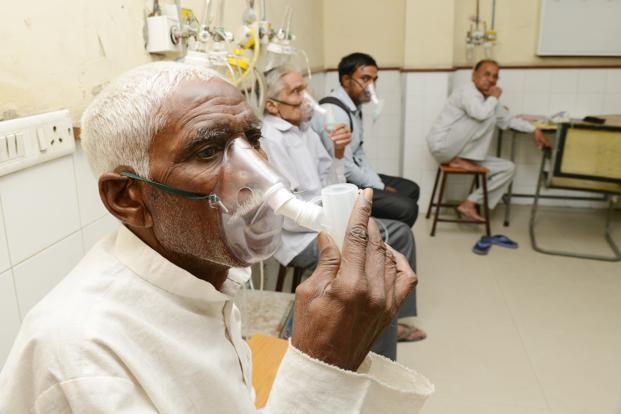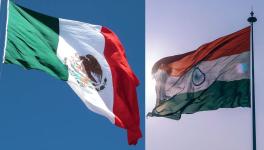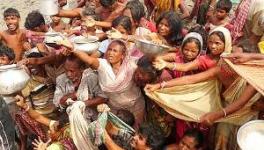Indian Media Forgets About Healthcare When the West Is Not Talking About it

Representational image. | Image Courtesy: Livemint
Every day, some 600 to 1,000 people die of tuberculosis or TB in India. The figure for the entire world stands at 4,400 daily. Four thousand is also the death toll in China from the highly-contagious Novel Coronavirus or COVID-19, in the last two months. In 2016, more than 4.8 lakh people died of TB in India alone. The worldwide annual toll from TB is around 1.4 million.
No doubt the number of people losing their lives due to TB has been declining because of better treatment facilities and measures being taken by the governments all over the world in the last few years. Yet, in recent times, no health minister has informed Parliament about the grave health crisis that TB poses in India. No television channel has made news of TB-related deaths their prime-time news in years. But on 12 March, some channels made the Health Minister Harsh Vardhan’s statement, that so far 73 people are affected by COVID-19, big news. [Right now there are 83 known cases.]
Seventeen of the COVID-19 affected, according to the Health Minister, were foreigners while 56 are Indians. Four of them have been cured. Later, the first death was reported from Karnataka, where a 76-year-old man succumbed to the virus, and another death has been reported of a patient in Delhi.
Minutes after the Health Minister’s speech, Delhi Chief Minister Arvind Kejriwal declared that Novel Coronavirus is an epidemic and ordered the closure of all cinema halls, schools and colleges until March 31. Only those educational institutions where examinations are going on would remain open. Haryana, too, has declared it an epidemic.
No doubt COVID-19 is a dangerous global pandemic and has the potential to spread widely in India too. But it should be kept in mind that this figure of 83 relates to two months of reported cases since the first one came to light in late January in Kerala. The man who first reported positive had actually returned from Wuhan in China. [The alarming story of his infection and death paint a sorry picture of India’s healthcare, but that is another matter.] Besides these, most of the foreigners who have fallen victim to this disease are from Italy, the second-worst-affected country after China.
This is absolutely not to underestimate the threat that Covid-19 poses to people in India and the world. But one is tempted to ask why we in India are not as sensitive to, nor even concerned about, much more deadly ailments such as TB, malaria, typhoid, etc, which are rampant in the country.
Is it that our media and the government have suddenly started paying attention to Coronavirus because the West is doing so? As the health experts have been saying from the very beginning, there is a need to test for Novel Coronavirus on a mass scale and strong preventative action is required to stem the spread of this virus.
Yet, we were certainly not very concerned about any of these warnings until COVID-19 was affecting the people of neighbouring China. In fact, while China was battling the epidemic, we were busy hosting the United States President Donald Trump and proudly proclaiming that one lakh people had assembled to receive him at the Motera Stadium in Ahmedabad on 24 February.
Here is more food for thought: Had the COVID-19 panic button been pushed well in time, and a lock-down imposed before 23 February, the riotous mobs that killed, maimed and injured people and looted and burned properties in North-east Delhi in the last week of February would not have gone on a rampage either.
Yes, India does pay some attention to TB, but it still reports far more infections than the rest of the world. We have all often watched those televised advertisements in which noted film actors warn people about the disease. Barring that, we do not have any regular discussion on what causes TB and how should it be prevented. Why only TB, there are several deadly disease such as cancer, malaria, diabetes, and many more, which are taking a huge toll every year, for many of which India is supposedly an epicentre of both positive diagnosis and deaths. Yet, we hardly focus on the many ailments that Indian healthcare suffer from, and now we expect it to be able to tackle a pandemic...
The irony does not end here. Indian media allocates a disproportionately high space to diseases such as Swine Flu, Bird Flu, and so on. Again, this does not mean that these conditions don’t require attention. It is just that the media seems to wake up only after the Western media highlight them—not when they are happening in our own country or in our neighbourhood.
One can even argue that the viruses that cause these other diseases, quite like Covid-19, can spread very fast. But fighting them demands better and long-term planning. Here in India we lose hundreds of children due to mysterious diseases every year.
Just over a year ago, in Muzaffarpur, Bihar, the state government deemed it fit to blame lychee fruit crops for the spread of a ‘mystery’ disease, which was later identified as Japanese Encephalitis, which is in fact endemic to many central-eastern parts of the country. Even Gorakhpur in Uttar Pradesh is a recent witnesses to a semi-annual devastation caused by the same condition.
This is the other irony confronting us: if we are not even prepared to confront the regular, seasonal outbreak of diseases and conditions that are endemic to our geography, what sense do our rulers make when they create havoc in the name of alerting people about Coronavirus?
Is it not futile to expect our creaking healthcare system to succeed in locking down the whole country or even isolate any state, as Italy or China have? The whole geo-sociological structure of India is different from other countries. At present COVID-19 is spreading in developed countries which have a much better record in maintaining hygiene, and that is where the Indian media has got its cues from, and it has started giving extraordinary coverage to this virus. It ignores such events, and fatalities from them, in the poor and backward countries of Asia, Africa and South America.
India is in fact economically and socially closer to the latter category of countries, not the West. Yet our politicians and media-persons are over-cautioning the masses despite doctors repeatedly saying that we should not spread panic. Further, the same media which is counselling us on this virus always ends with a statement not to panic. Even politicians—though not only in India—have found in the Novel Coronavirus a cover to hide behind. Now nobody will question the closure of banks, the economic slowdown, the communal violence in Delhi, and so on. They are not realising that through their actions they are causing even more harm.
Curiously, five days after the March 7 advice, thousands of BJP workers and supporters gathered at the Bhopal airport to greet Jyotiraditya Scindia, the Congress leader who has now joined the saffron party. So COVID-19 may be forcing the entire country towards closure, but the campaign to overthrow a Congress government is going on at full speed.
The world may develop a vaccine to treat COVID-19 patients soon, but it will take much longer to develop a medicine to check this unique type of political disease in which elected governments die somewhat unnatural deaths.
The author is a freelance journalist. The views are personal.
Get the latest reports & analysis with people's perspective on Protests, movements & deep analytical videos, discussions of the current affairs in your Telegram app. Subscribe to NewsClick's Telegram channel & get Real-Time updates on stories, as they get published on our website.























